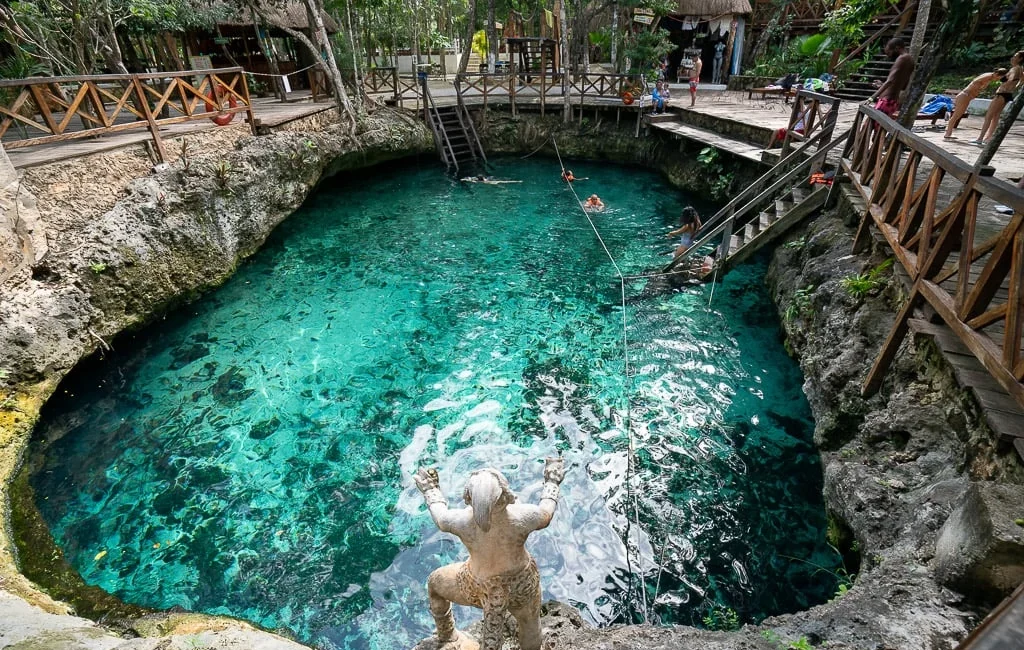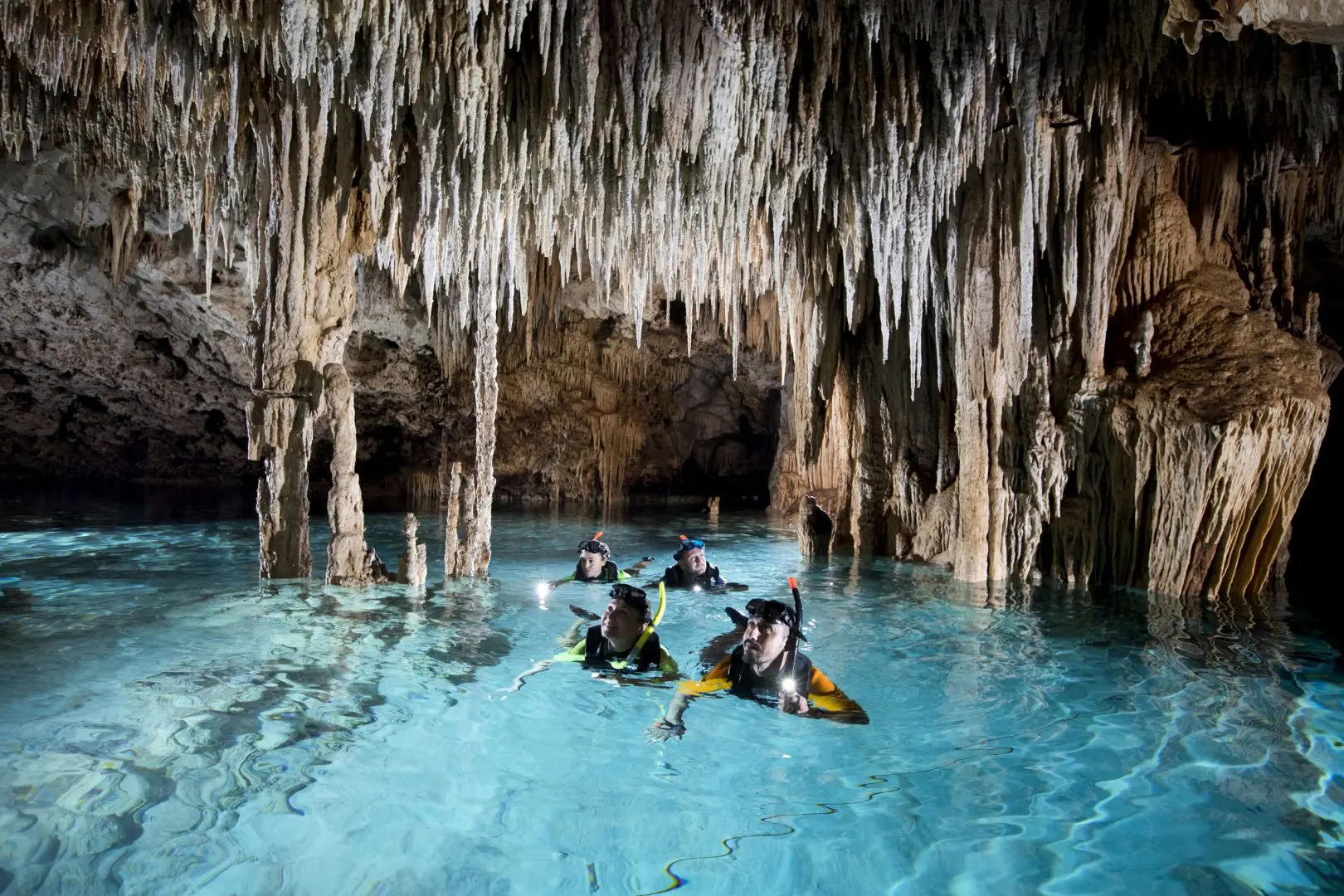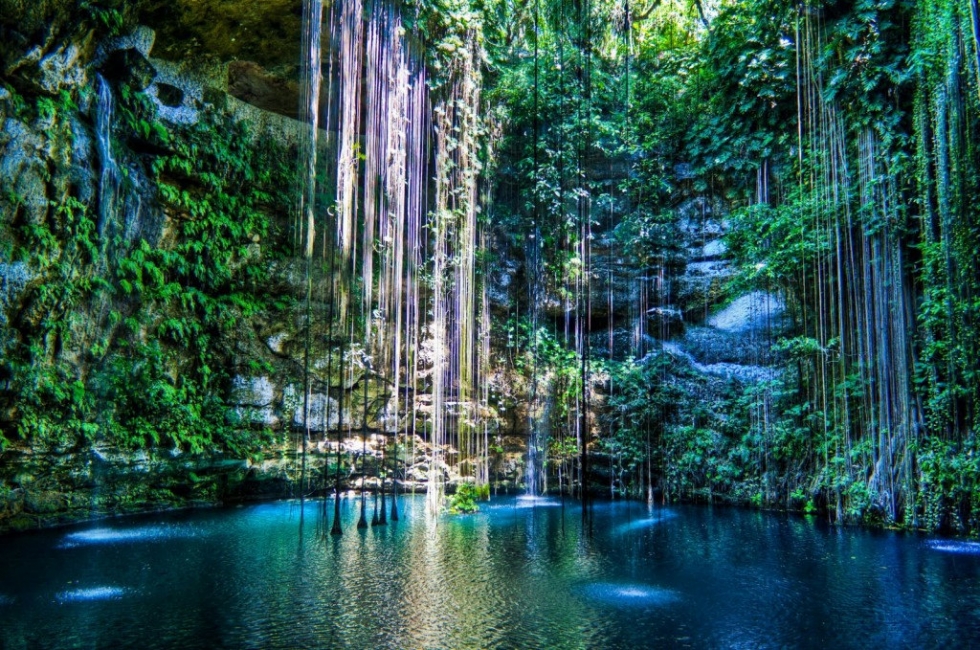Cenotes in Yucatán are natural wonders that combine mysticism, history, and breathtaking beauty. These freshwater sinkholes are not only perfect for swimming, diving, and exploring, but they also carry a cosmic origin: they were formed millions of years ago after the meteorite impact that caused the extinction of the dinosaurs. Today, visiting cenotes is one of the most unforgettable experiences for travelers exploring the Mexican Caribbean.
A Cosmic Cataclysm That Shaped Yucatán
Around 66 million years ago, the Chicxulub meteorite hit the Earth near modern-day Progreso, Yucatán. Measuring about 10 km in diameter, the impact released the energy of 10 billion atomic bombs, leaving a crater over 200 km wide.
This event changed the planet forever: tsunamis, fires, earthquakes, and a dust cloud blocked sunlight for months, leading to the extinction of the dinosaurs. But from this catastrophe, something extraordinary emerged—the unique geology that gave birth to more than 10,000 cenotes across Yucatán.

How Cenotes Were Formed
The meteorite fractured the peninsula’s limestone bedrock, creating underground caves known as karst systems. Rainwater slowly dissolved the rock, filling these spaces with fresh water. Over time, the roofs of these caves collapsed, forming the cenotes we see today.
- Open Cenotes: Like natural swimming pools, surrounded by lush jungle.
- Semi-Open Cenotes: Partially covered, with beams of sunlight piercing through openings.
- Underground Cenotes (Caves): Mysterious chambers illuminated by artificial or natural light.

Cenotes in Mayan Culture
For the ancient Mayans, cenotes were more than water sources—they were sacred portals to Xibalbá, the underworld. Many cenotes became ritual spaces where offerings, treasures, and even human sacrifices were made to honor the gods.
Visiting a cenote today means stepping into a place filled with both natural beauty and profound cultural meaning.
The Best Cenotes to Visit in Yucatán
- Sacred Cenote, Chichén Itzá: A historical site where Mayans performed rituals and sacrifices.
- Ik Kil Cenote (near Valladolid): One of the most famous cenotes, known for its vines and crystal-clear waters.
- Dos Ojos Cenote (Tulum): A diver’s paradise with interconnected underwater caves.
- Gran Cenote (Cobá): A mix of open and underground sections, ideal for snorkeling and exploring.

Tips for Visiting Cenotes
- Bring eco-friendly sunscreen to protect the fragile ecosystem.
- Use life jackets if you’re not a confident swimmer.
- Respect local rules: many cenotes are still considered sacred.
- Bring a waterproof camera—you’ll want to capture every moment.
Plan Your Adventure with Midas
Exploring cenotes is a once-in-a-lifetime experience. At Midas Travel, we offer guided tours that combine adventure, history, and culture, ensuring you enjoy these natural treasures safely and comfortably.
